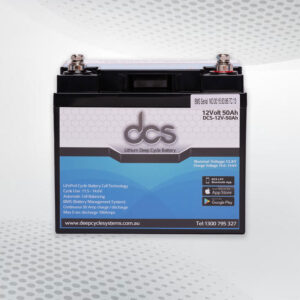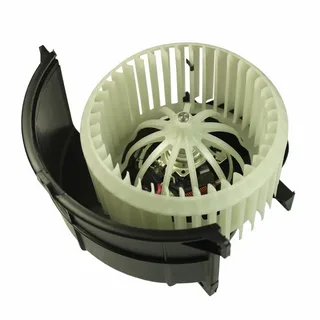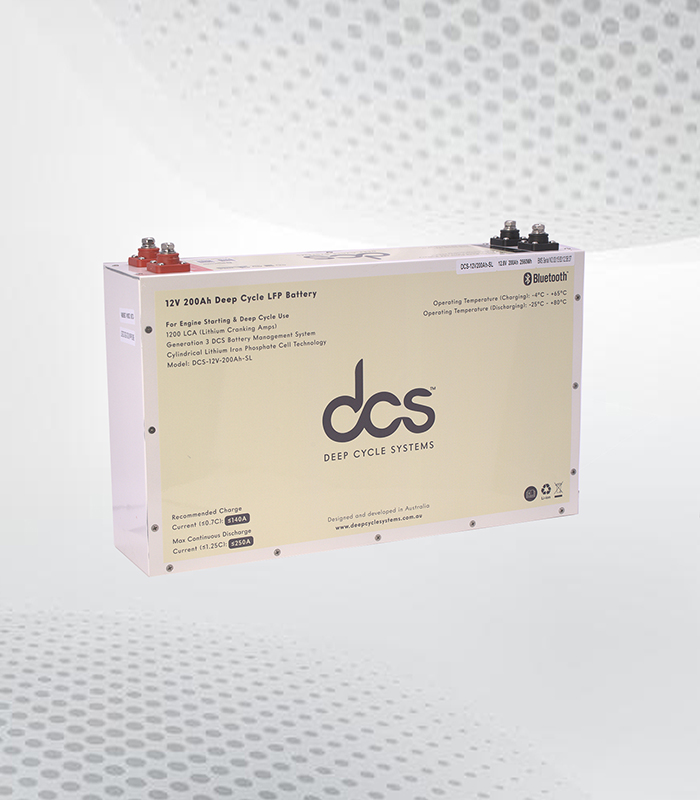Today’s demand for efficient, reliable, and portable power sources is more crucial than ever. Whether for camping adventures, solar energy systems, or backup power supplies, the compact deep cycle battery stands out as a game-changer. Designed for long-term use and consistent power delivery, these batteries are essential for modern energy needs. This guide will explore why these batteries are revolutionary and how they can benefit you. With technological advances, compact deep-cycle batteries offer increased efficiency and longer lifespans than traditional batteries.
Understanding Deep Cycle Batteries
Deep-cycle batteries are distinctively designed to deliver consistent power over prolonged periods, making them indispensable for various applications. Unlike typical car batteries, which are built for short, high-current bursts, deep-cycle batteries can handle frequent discharging and recharging without significant performance loss. This makes them ideal for renewable energy systems, marine equipment, RVs, and off-grid energy storage.
Deep-cycle batteries are distinguished by their ability to provide a steady current. They are constructed with thicker plates and denser active material, enabling them to endure the rigours of regular deep discharges. This robust construction also contributes to their longer lifespan compared to conventional batteries.
Deep-cycle batteries come in several types, each with unique attributes. Lead-acid variants, including AGM and gel types, are well-known for their reliability and cost-effectiveness. These batteries are widely used due to their proven track record and relatively low cost. Conversely, lithium-ion deep-cycle batteries offer superior efficiency, longer cycle life, and lighter weight, making them a popular choice for more demanding applications.
These batteries are crucial for anyone requiring a dependable power source that won’t fail under constant use. Whether powering a solar energy system or ensuring your boat’s electronics remain operational, the correct deep cycle battery can make all the difference. By understanding their construction, capabilities, and the various types available, you can make an informed decision tailored to your specific energy needs.
The Advantages of a Slim Deep Cycle Battery
The slim deep cycle battery offers many advantages that cater to modern energy demands. Its streamlined design allows for effortless integration into spaces where traditional batteries would be cumbersome. This makes it particularly suitable for applications in small boats, RVs, and compact solar installations where space is at a premium.
One of the standout features of slim deep-cycle batteries is their efficient space utilisation. Despite their reduced footprint, these batteries do not compromise on power delivery, maintaining the consistent performance that deep-cycle batteries are renowned for. This ensures that even in tight quarters, you can rely on uninterrupted energy flow.
Another significant benefit is the ease of handling. The slimmer profile often results in a lighter overall weight, simplifying transportation and installation. This is especially beneficial in mobile applications where frequent relocation may be required. The reduced weight also translates to improved fuel efficiency in vehicles, contributing to overall operational cost savings.
Furthermore, slim deep-cycle batteries are designed with advanced technology to maximise energy efficiency and longevity. They often incorporate innovative materials and construction techniques that enhance their durability and performance, even under rigorous conditions. This means fewer replacements and lower maintenance costs over the battery’s lifespan.
Why Choose a Compact Deep-Cycle Battery?
Choosing a compact deep-cycle battery offers numerous benefits, particularly for those who need reliable power in limited spaces. One key advantage is their reduced size, allowing easy integration into tight areas such as small boats, caravans, and confined solar setups. This makes them highly versatile and adaptable to various applications where space conservation is crucial.
These batteries’ lighter weight also facilitates easier handling and installation, making them ideal for mobile applications where frequent movement is necessary. Their compactness does not mean a compromise on performance; these batteries still deliver consistent power, making them a practical choice for modern energy demands.
Compact deep-cycle batteries often incorporate advanced technology that enhances efficiency and longevity. They are designed to withstand frequent discharges and recharges, ensuring a dependable power source over the long term. This makes them particularly beneficial for off-grid setups and renewable energy systems that require a robust and reliable power supply.
Moreover, the environmental impact is reduced as these batteries utilise fewer materials while maintaining excellent energy storage capabilities. This aspect is increasingly important as more consumers seek sustainable energy solutions. Opting for a compact deep-cycle battery means you get a space-efficient, reliable, and eco-friendly power solution that meets a wide array of energy needs.
Identifying the Best Value Deep Cycle Battery
Identifying the best value deep cycle battery requires balancing initial costs and long-term benefits. While choosing the cheapest option available might be tempting, this approach can lead to higher expenses over time due to frequent replacements and subpar performance. It’s essential to evaluate the battery’s cycle life, which refers to the number of complete charge and discharge cycles it can endure before its capacity significantly diminishes. A longer cycle life often translates to better value, even if the upfront cost is higher.
Warranty is another critical factor. Batteries with robust warranties typically indicate confidence in their longevity and reliability, providing peace of mind and potential savings on future replacements. Customer reviews and ratings can also offer valuable insights into real-world performance and durability, helping you make an informed decision.
Consider your application’s specific requirements. For instance, lithium-ion batteries, while initially more expensive, offer greater efficiency, longer life, and lighter weight, making them ideal for demanding applications and ultimately providing better value. Conversely, lead-acid batteries, including AGM and gel types, might be more budget-friendly and still deliver satisfactory performance for less intensive uses.
Energy efficiency is another aspect to consider. Batteries that provide consistent power output without significant energy loss can reduce operating costs over their lifespan. By factoring in these elements, you can identify a deep-cycle battery that offers the best balance of price, performance, and longevity, ensuring optimal value for your investment.
Tips for Maintaining Your Lightest Deep Cycle Battery
Regular maintenance is key to ensuring the longevity and optimal performance of your lightest deep cycle battery. Begin with routine visual inspections, checking for any signs of wear, corrosion, or leaks. Keep the battery terminals clean and free from build-up, using a mixture of baking soda and water if necessary. Proper ventilation is essential, especially for batteries installed in enclosed spaces, to prevent overheating and gas build-up.
Monitor the battery’s charge levels consistently and avoid letting it discharge completely. Deep discharges can significantly shorten the battery’s lifespan. Invest in a quality battery management system (BMS) to help regulate charging and discharging cycles, protecting the battery from overcharging and deep discharges.
Temperature control is another critical factor. Extreme temperatures can affect battery performance and longevity, so keep the battery within its optimal operating range, usually specified by the manufacturer. If storing the battery for an extended period, ensure it is fully charged and stored in a cool, dry place.
Regularly check the electrolyte levels in lead-acid batteries and top up with distilled water if necessary. For lithium-ion batteries, avoid exposing them to physical damage and ensure they are stored with a partial charge if not used for long periods. By following these maintenance tips, you can maximise the lifespan and efficiency of your lightest deep-cycle battery.
Comparing Lifespan and Durability in Deep Cycle Batteries
The lifespan and durability of deep-cycle batteries vary significantly across different technologies. Lithium-ion batteries generally offer superior longevity, often lasting up to 10 years with proper care. This extended lifespan is due to their ability to handle frequent deep discharges and recharges more efficiently than their lead-acid counterparts. Lead-acid batteries, including AGM and gel types, typically have a shorter lifespan, averaging between 3 and 5 years, but they remain popular due to their cost-effectiveness and proven reliability.
The construction and materials used also influence durability. Lithium-ion batteries are lightweight yet robust, making them ideal for mobile and demanding applications. They are less susceptible to damage from deep discharges and can operate efficiently across a wider temperature range. In contrast, lead-acid batteries are heavier and may require more frequent maintenance, such as topping up electrolyte levels, to ensure longevity.
Understanding your application’s specific requirements is crucial when comparing these batteries. For example, while lithium-ion batteries offer long-term savings and efficiency, lead-acid batteries might be more practical for less intensive uses where budget constraints are a factor. By evaluating these aspects, you can select the battery that best meets your durability and lifespan needs.
Navigating Different Deep Cycle Battery Technologies
Navigating different deep-cycle battery technologies can be a bit overwhelming, given the variety available. Lead-acid batteries, including AGM and gel variants, are traditional choices favoured for their cost-effectiveness and proven reliability. These batteries are well-suited for applications where budget constraints and moderate energy demands are key considerations.
On the other hand, lithium-ion batteries offer cutting-edge technology with higher energy efficiency, lighter weight, and longer cycle life. They are ideal for high-demand scenarios such as off-grid energy systems and advanced marine equipment.
Each technology has distinct advantages and potential drawbacks. Lead-acid batteries are heavier and may require regular maintenance, such as checking electrolyte levels, but they offer a dependable performance history. Lithium-ion batteries, while more expensive initially, are virtually maintenance-free and provide superior performance in extreme conditions.
Understanding your application’s specific energy needs and operational conditions will help you make an informed choice. By weighing the benefits of each technology, you can select a deep-cycle battery that best meets your requirements for durability, efficiency, and cost.
Conclusion
Ultimately, compact deep cycle battery transforms how you access and utilise energy, making it indispensable for modern energy solutions. Its ability to fit into small spaces without sacrificing performance is invaluable for various applications, from motorhomes and boats to off-grid solar systems. The advanced technology in this battery ensures that it delivers consistent, reliable power, meeting the demands of today’s energy-intensive lifestyles.
FAQs
Q1: Can I use a compact deep cycle battery in my RV?
Due to their reduced size and efficiency, compact deep-cycle batteries are excellent for RVs. They provide consistent power for appliances and lighting without occupying significant space, making them a practical choice for mobile living.
Q2: How long do deep-cycle batteries last?
The lifespan of a deep-cycle battery depends on its type and usage. Lead-acid batteries typically last 3-5 years, whereas lithium-ion batteries can last up to 10 years with proper maintenance. Factors like charging habits and environmental conditions also play a crucial role in determining longevity.
Q3: Are slim deep-cycle batteries more expensive?
Due to their advanced design and technology, slim deep-cycle batteries might have a higher initial cost. However, they offer long-term savings by freeing up space and often providing greater energy efficiency. The ease of installation and reduced weight can also translate to cost benefits in specific applications, such as improved vehicle fuel efficiency.
| Related Business Listings |
| Directory Submissions |
| Regional Directory |




